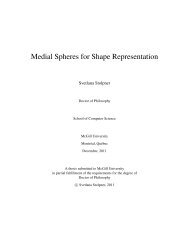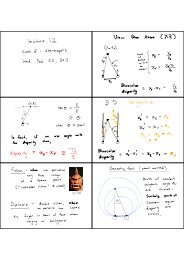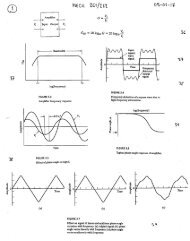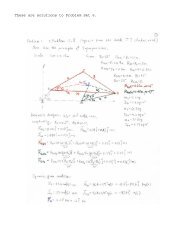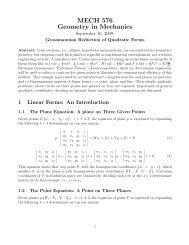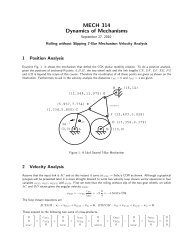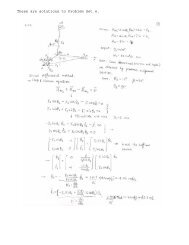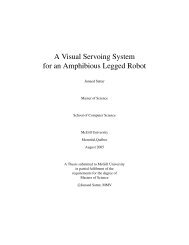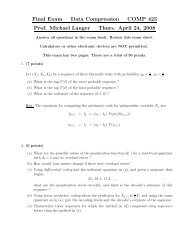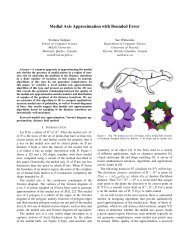Conditioning reduces entropy Prediction by partial matching ... - CIM
Conditioning reduces entropy Prediction by partial matching ... - CIM
Conditioning reduces entropy Prediction by partial matching ... - CIM
You also want an ePaper? Increase the reach of your titles
YUMPU automatically turns print PDFs into web optimized ePapers that Google loves.
COMP 423 lecture 16 Feb. 11, 2008<br />
it to compute conditional probability functions:<br />
p(next symbol | previous kmax symbols )<br />
p(next symbol | previous kmax − 1 symbols )<br />
.<br />
p(next symbol | previous symbol )<br />
p(next symbol )<br />
• Add one more symbol, AN+1 = ǫ (for “escape”) to the alphabet. This escape symbol indicates<br />
that the encoder is switching from the k th order model to the k − 1 th order model.<br />
• To choose the probabilities of the next symbol, use the highest order model k such that the<br />
previous k symbols followed <strong>by</strong> the next symbol has occured at least once in the past. That<br />
is, the encoder keeps escaping until it finds such an order.<br />
• What if a symbol has never occured before in any context? That is, what if it is the first<br />
time that a symbol occurs? In this case, the encoder uses a “k = −1” order model to encode<br />
the symbol. (Call the order “-1” is meaningless, of course. All this means is that we are<br />
decrementing the order from k = 0, i.e. we escaped from k = 0.)<br />
Example 1: “abracadabra” with kmax = 2<br />
The symbols that are encoded are:<br />
and corresponding orders are<br />
ǫ, ǫ, ǫ, a, ǫ, ǫ, ǫ, b, ǫ, ǫ, ǫ, r, ǫ, ǫ, a, ǫ, ǫ, ǫ, c, ǫ, ǫ, a, ǫ, ǫ, ǫ, d, ǫ, ǫ, a, ǫ, b, r, a<br />
2, 1, 0, −1, 2, 1, 0, −1, 2, 1, 0, −1, 2, 1, 0, 2,1, 0, −1, 2, 1,0, 2, 1, 0, −1, 2, 1, 0, 2, 1,2, 2<br />
You may wonder how this could achieve compression. The number of symbols (including the ǫ)<br />
is far more than the original number of symbols. On the one hand, one would think that this would<br />
require more bits! On the other hand, notice that many of these “escapes” occur with probability<br />
1 and so no bits need to be sent.<br />
Example 2<br />
Let {a,b} be the alphabet and kmax = 1. Suppose the string we wish to encode begins aabb...<br />
We send the following symbols:<br />
ǫ, ǫ, a, ǫ, a, ǫ, ǫ, b, ǫ, b, ..<br />
Let’s consider, for each of these symbols, the probabilities for a, b, ǫ. In the table below, we<br />
consider only those cases where the probability is 0 or 1.<br />
2



